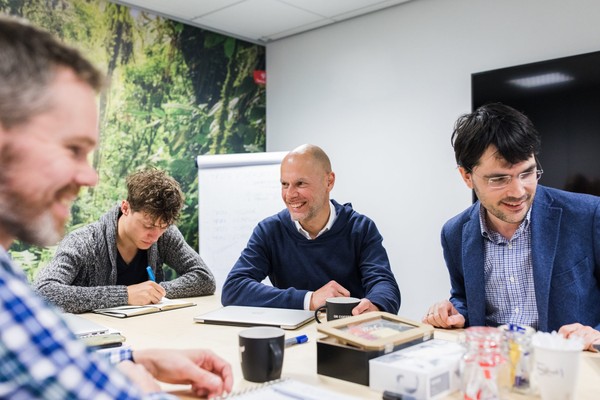Technology forecasting for the automation of food forests
Design a product which makes the production of food forests more efficient and commercial more attractive

It takes a couple of years before food forests start producing products. Nevertheless, for the harvest, processing and sales of the food forest on a larger scale, the need for the right technology increases. To increase the commercial attractiveness of the exploitation of food forests, whilst increasing the amount of food forests in the Netherlands, automation of the different processes could be the solution.
BACKGROUND INFORMATION
It takes a couple of years before the food forest starts producing products. Nevertheless, for the harvest, processing, and sales of the food forest on a larger scale, the need for the right technology increases. To increase the commercial attractiveness of the exploitation of food forests, whilst increasing the number of food forests in the Netherlands, automation of the different processes could be the solution. For many crops within the monocultures, automated picking machinery has been developed (apples, strawberries, nuts). These individual picking machineries are too costly, complex, and time-consuming for a food forest with multiple types of crops. A possible solution would be extensive integration of these machines, but which subsolutions technically and economically can and need to be integrated is unknown. Furthermore, there exists a possible gap between what the possible solution needs and the state of the art techniques.
ASSIGNMENT DESCRIPTION
This research aims to find alternative solutions/scenarios for the automatization of food forests. What are the most interesting subjects for the next ten years to conduct research on? To develop scenarios, sub-research is needed about food forests (variety of crops and fruits, different ‘lay-outs,’ processing steps, labor efforts, etc.). Furthermore, the current state of the art techniques in the automatization of the food forests (vision, multifunctional gripers, autonomy, road planning, integration, product transport, safety, law) is important. This information will create multiple scenarios with various degrees of atomization and different economic and technical risks. These scenarios will be analyzed, and the promising combinations of techniques will be connected with the existing or coming realizable solutions. Some of the “70% feasible” combinations will also be visualized. In discussion with the client, most of the promising “wow-solutions” for the future will be further developed. This research is a collaboration between the University of Twente, Fransjan de Waard (St. Voedselbosbouw Nederland), Arne Driessen (Golden Bird Impact Investment) and Geert van der Veer (St. Herenboeren Nederland).
Recommended Study Program
Industrial Design Engineering with a feeling for nature, agriculture, sustainability, and technique.
Are you following a different study program, but do you think you are suitable for the challenge? Do not hesitate to contact us!
Starting Date
As soon as possible
Interested?
Interested in this assignment? Send us a mail via smart@novelt.com






